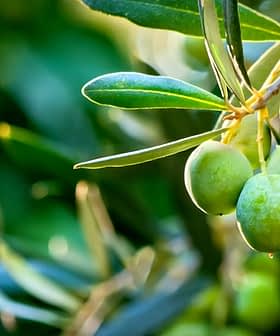
Stopping use of the descriptive terms ‘pure’ and ‘light’ – which have long misled olive oil consumers – is among changes sought by industry members that the International Olive Council is now seeking feedback on.
Redefinition of the term “olive oil” – currently used for products containing a mix of refined olive oil and virgin olive oil and another source of consumer confusion – is also on the table as part of a proposal from Turkey.
And among various changes put forward to testing and parameters is a “fast and simple” way to measure phenolic compounds which would aid use of health claims on labels.
Under a new system designed to boost transparency, the IOC has begun circulating such proposals on new or revised methods of analysis, parameters or limits. Today it published 12 such proposals and invited feedback by September 8 from relevant stakeholders. The proposals come from various parts of the world and are not from the IOC’s exective secretariat but they were examined by the IOC chemistry experts at their last meeting and discussed by the IOC Advisory Committee at its May 22 – 23 meeting in Croatia.
They include:
- Relaxation of the K270 (UV absorption) limit for refined olive oil from 1.1 to 1.25 and of the K270 limit for olive oil from 0.9 to 1.15. Proposed by the IOC’s Turkish delegation, this is linked to difficulty maintaining the current values when exporting olive oil to other countries and aimed at facilitating trade.
- A new method for the determination of the copper pyropheophytin content of olive pomace oil. Proposed by Taiwan’s Food and Drug Administration to fight against fraud, namely using copper pyropheophytin to “green up” olive pomace oil.
- Routine use of the “simple, fast” colorimetric method (Folin-Ciocalteu, expressed in hydroxytyrosol) for the quantification of the phenolic compounds content in olive oils. Proposed by IOC experts and useful for nutrition claims on labels.
- The combination of three analysis methods in one, namely those for the preparation of methyl esters, determination of fatty acids and determination of trans fatty acids. Proposed by a working group on IOC methods as a simplification of methods in the IOC standard.
- A new or changed definition of “olive oil”.; deletion of the “ordinary olive oil” category; classification of oils with an acidity >2.0 percent as “lampante olive oil”; deletion of the words “pure” and “light”; and replacement of the term “well balanced” by “high intensity bitter and pungent”. Proposed by the Turkish delegation to avoid misleading consumers by better defining and describing olive oil. “Simplification of categories and use of more descriptive terms will improve international trade and consumer understanding of the product.”
A full list of the proposals is posted on the IOC website. The IOC said they will be amplified in draft technical proposals as and when delivered by the authors to its executive secretariat.








